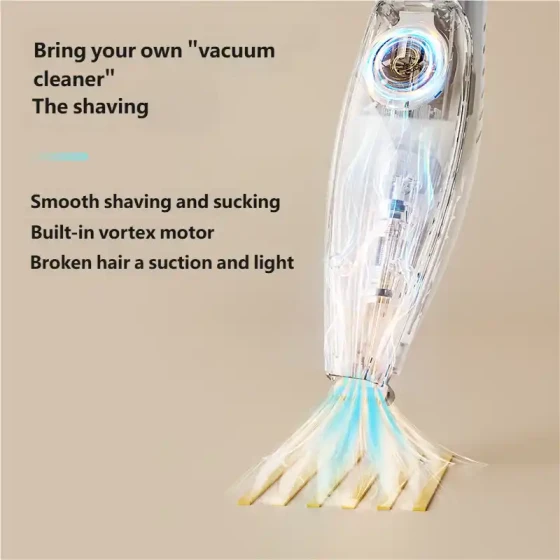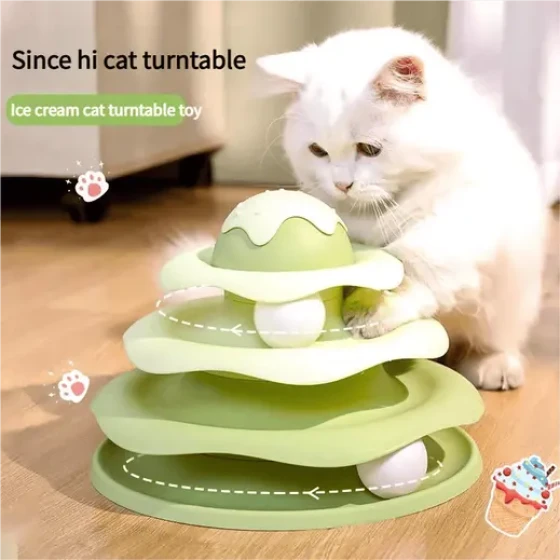Is It Still Necessary to Treat Feline Panleukopenia at Day 5_How to Save Your Beloved Cat During the 5-Day Critical Treatment Period
Feline panleukopenia, the "number one killer" that terrifies countless cat owners, often signals a tough battle once it strikes. Many caretakers face a dilemma when their beloved cat is sick: it’s already day five of panleukopenia, is it still necessary to keep treating? Especially with costly treatments, this decision can be heart-wrenching. In fact, although day five is already a critical phase, it doesn’t mean giving up. Early and active treatment is essential, and by persisting, kittens still have a chance of survival.
What exactly is feline panleukopenia?
Feline panleukopenia, scientifically called Feline Panleukopenia Virus (FPV), is an acute, highly contagious disease caused by feline parvovirus. This virus is very cunning; it mainly attacks rapidly dividing cells in cats, such as those in bone marrow, intestines, and lymphoid tissue. Imagine that bone marrow is the "arsenal" producing white blood cells, intestinal cells are responsible for nutrient absorption, and lymphoid tissue serves as the immune system’s "command center." Once these areas are invaded by the virus, the cat’s immunity plummets, intestinal function deteriorates, and a series of severe symptoms appear.
The transmission routes of feline panleukopenia are varied and difficult to guard against. The virus mainly spreads through the feces, vomit, saliva, and nasal secretions of infected cats. Healthy cats may become infected by contacting these secretions, contaminated environments, feeding utensils, litter boxes, or even the owner’s clothing and hands. Moreover, the virus is highly resilient, capable of surviving in the environment for months or even up to a year, resisting most common disinfectants. This explains why even indoor cats may unfortunately contract the virus brought home by their owners.
The incubation period and dreadful symptoms of feline panleukopenia
The incubation period usually ranges from 2 to 10 days, depending on the individual cat’s immunity. During this time, the cat may appear normal, but the virus is already secretly wreaking havoc inside. Once symptoms develop, they tend to be intense, especially in kittens and unvaccinated cats who are high-risk groups, with mortality rates exceeding 90%.
Typical symptoms of feline panleukopenia include:
- Fever: Early on, body temperature may rise, even exceeding 40 degrees Celsius.
- Lethargy and drowsiness: Cats become listless, lose interest in surroundings, and may hide.
- Loss of appetite or refusal to eat: Even tasty food fails to stimulate them; some refuse all food and water.
- Vomiting: Initially white foam, possibly progressing to yellow-green or blood-tinged vomitus.
- Diarrhea: Stool becomes loose, watery, or bloody with a foul smell.
- Dehydration: Due to vomiting and diarrhea, cats lose significant fluids, skin loses elasticity, and eye sockets may appear sunken.
- Sharp drop in white blood cells: A hallmark of feline panleukopenia; the virus attacks bone marrow causing leukopenia, leaving the cat’s immune system nearly nonexistent.
Severe cases may trigger anemia and neurological complications such as tremors and seizures. The disease progresses rapidly in the acute phase and without timely, effective treatment, death may occur quickly.
Is treatment still necessary on day 5 of feline panleukopenia?
Returning to the initial question: is it necessary to continue treatment on day 5 of feline panleukopenia? The answer is: absolutely necessary!
Although day 5 marks entry into the dangerous phase, if the cat can survive the initial critical days, its chances of survival increase significantly. Multiple studies and clinical experience show that cats that endure the first 5 days of the critical period often gradually recover. It’s like climbing a mountain; the steepest section is over. There is still a way ahead but it is no longer the hardest part.
Of course, treating feline panleukopenia is not a one-time cure; it requires the cat’s immune system to fight the virus. Currently, there is no direct antiviral drug that kills the virus. Veterinary treatment mainly consists of supportive care to maintain vital signs, boost immunity, and give the cat enough strength to overcome the virus.
Treatment strategies during the critical period: how to save your beloved cat?
During the critical treatment phase, particularly on day 5, proactive supportive measures must be taken to help the cat through this difficult time. These measures include:
- Fluid and electrolyte balance: Feline panleukopenia causes severe vomiting and diarrhea, resulting in dehydration and electrolyte disturbances. Intravenous fluids are the most important method to correct dehydration, replenish electrolytes, and provide nutrition. You can think of it as giving the cat "life-sustaining water" to keep its body functioning normally.
- Control vomiting and diarrhea: Ongoing vomiting and diarrhea worsen dehydration and loss of nutrients. Anti-emetics and anti-diarrheal drugs are needed to relieve these symptoms.
- Antibiotic treatment: The virus causes a drastic drop in white blood cells, leaving the cat almost immunocompromised and vulnerable to secondary bacterial infections such as pneumonia and septicemia. Broad-spectrum antibiotics can prevent and treat these infections, buying time for the cat’s immune recovery.
- Immune enhancement: Use of high-titer feline panleukopenia serum or recombinant feline interferon may provide passive immunity or stimulate the cat’s own immune system to produce antibodies.
- Nutritional support: Sick cats often lose appetite and may be unwilling or unable to eat. Once stabilized, small amounts of easily digestible food may be offered or nutritional supplementation via nasogastric tube to ensure sufficient energy to fight the disease.
- Keep warm: Ill cats may have unstable body temperature and require warmth to avoid chilling.
- Isolation: Due to its high contagiousness, infected cats must be strictly isolated to avoid infecting other healthy cats.
Treatment costs: an economic challenge in the race against the virus
Treating feline panleukopenia usually requires hospitalization, along with a range of diagnostic tests and medications. This cost can be a significant burden for many cat owners. According to information online and reports, treatment costs vary widely, from several thousand to tens of thousands of RMB, with some cases reportedly costing tens of thousands. The specific cost depends on the severity of the illness, treatment plan, duration of hospitalization, geographic location, and hospital pricing.
The main expenses include:
- Diagnostic fees: Blood tests, feline panleukopenia virus testing, etc.
- Hospitalization fees: Daily observation and nursing care.
- Medication fees: Fluids, antibiotics, anti-emetics, anti-diarrheals, immune enhancers, etc.
- Other treatments: If severe complications occur, special therapies such as blood transfusion may be required.
Despite the high cost, many devoted owners choose to persist as long as there is hope. As some say, money can be earned again, but a cat’s life only happens once.
Prevention is better than treatment: vaccination is key
The best strategy against feline panleukopenia, a "harsh adversary," is prevention. Timely vaccination with the core feline vaccine is the most effective method to prevent panleukopenia. The core vaccine usually includes attenuated or inactivated viruses for feline panleukopenia virus (FPV), feline herpesvirus-1 (FHV-1), and feline calicivirus (FCV), effectively helping cats build immunity to these diseases.
Kittens usually receive the first shot around 8 weeks old, followed by two to three boosters every 3-4 weeks to complete primary immunization. Adult cats require booster shots annually or every three years, depending on vaccine type and veterinary advice. Even indoor cats are recommended to vaccinate on schedule because the virus can be brought home via various routes.
Besides vaccination, maintaining good hygiene reduces infection risk. Regular cleaning of the cat’s living space, feeding utensils, and litter boxes as well as hand-washing, especially after contact with other cats, and thorough disinfection are important.
Common Q&A
- Can feline panleukopenia be transmitted to humans?
Currently, there is no evidence that feline panleukopenia can directly infect humans. The virus is specific to the feline family and does not infect humans. - Can feline panleukopenia relapse after recovery?
After recovery, cats usually acquire lasting immunity to the virus and generally do not get reinfected by the same virus. However, the virus may continue to be shed in feces for some time, so continued isolation and disinfection are necessary. - How to tell if a cat is infected with feline panleukopenia?
If a cat shows lethargy, poor appetite, vomiting, diarrhea, especially kittens, feline panleukopenia should be highly suspected. Prompt veterinary diagnosis is required, usually through blood tests checking white blood cell count and rapid antigen tests for FPV. - Can cats be fed during panleukopenia treatment?
During the acute phase, fasting and water restriction are often recommended due to intestinal damage and vomiting, to reduce intestinal burden. After stabilization, small amounts of easily digestible liquid food or prescription diet can be gradually reintroduced following veterinary advice. Some vets advocate small feeding amounts even during treatment to support intestinal cell repair.
Summary
Feline panleukopenia is a very serious infectious disease that threatens cats’ lives. Although treatment is challenging and expensive, treatment at day 5 of infection is still necessary and hopeful. Early detection, diagnosis, and treatment combined with professional supportive care are key. Responsible cat owners best protect their pets by timely vaccination and maintaining good hygiene habits to prevent panleukopenia. If infection occurs, never give up easily but actively cooperate with veterinary care to give your beloved cat a chance to survive.



